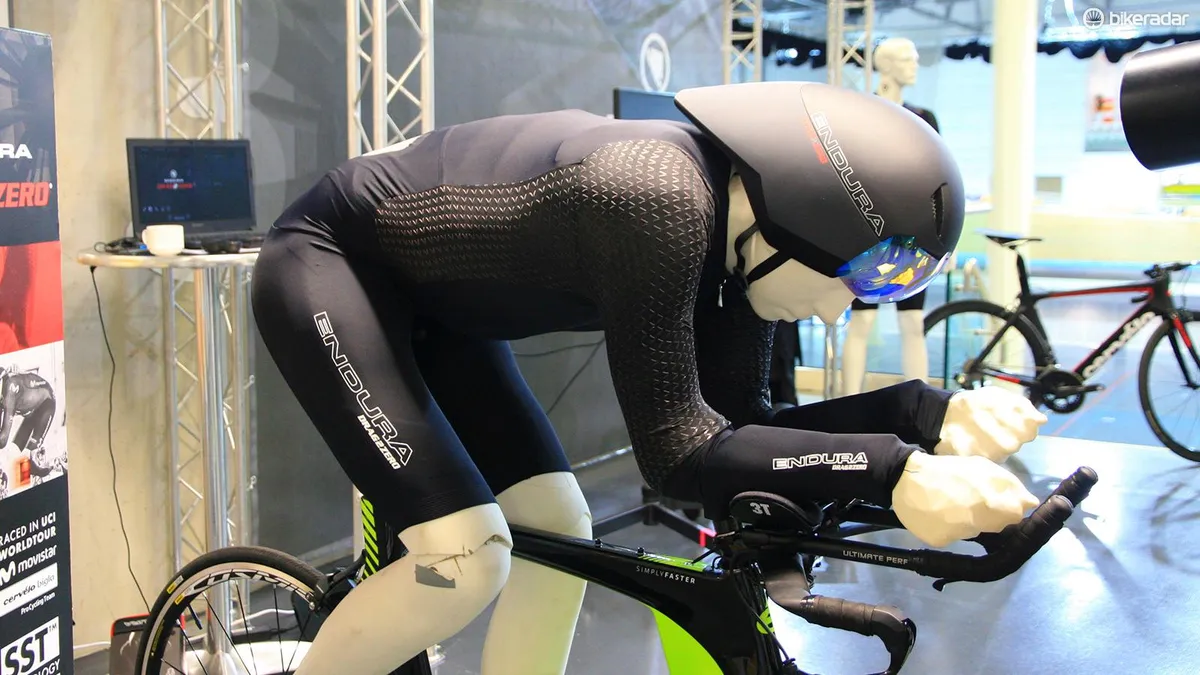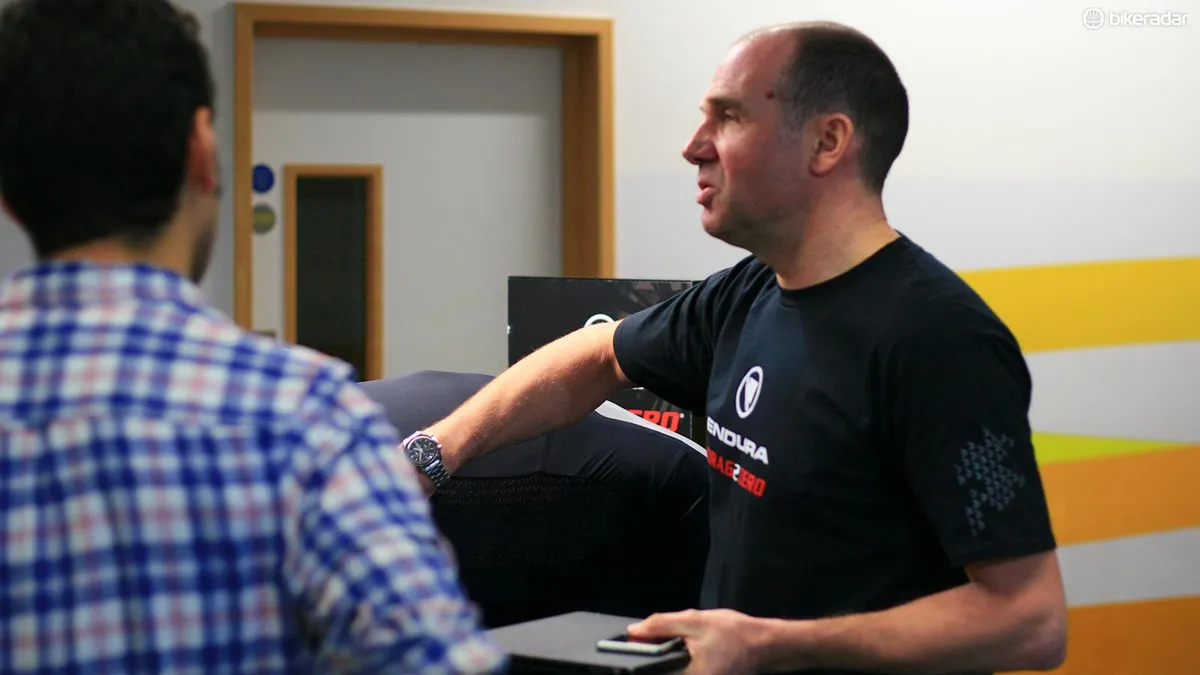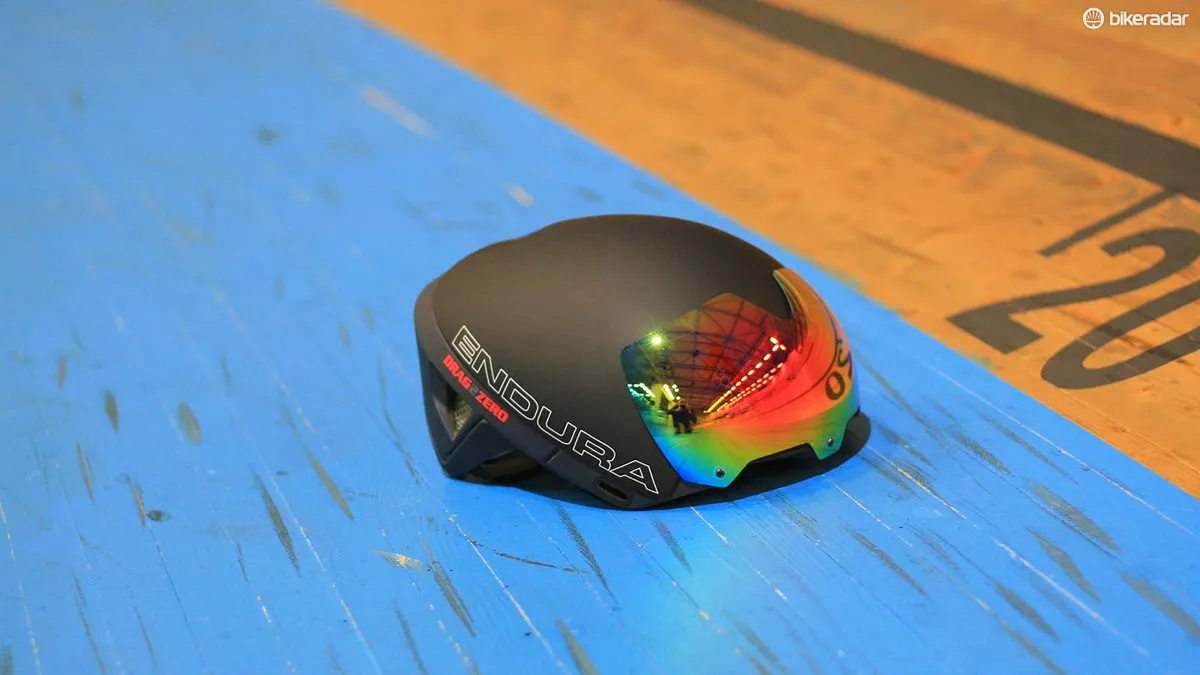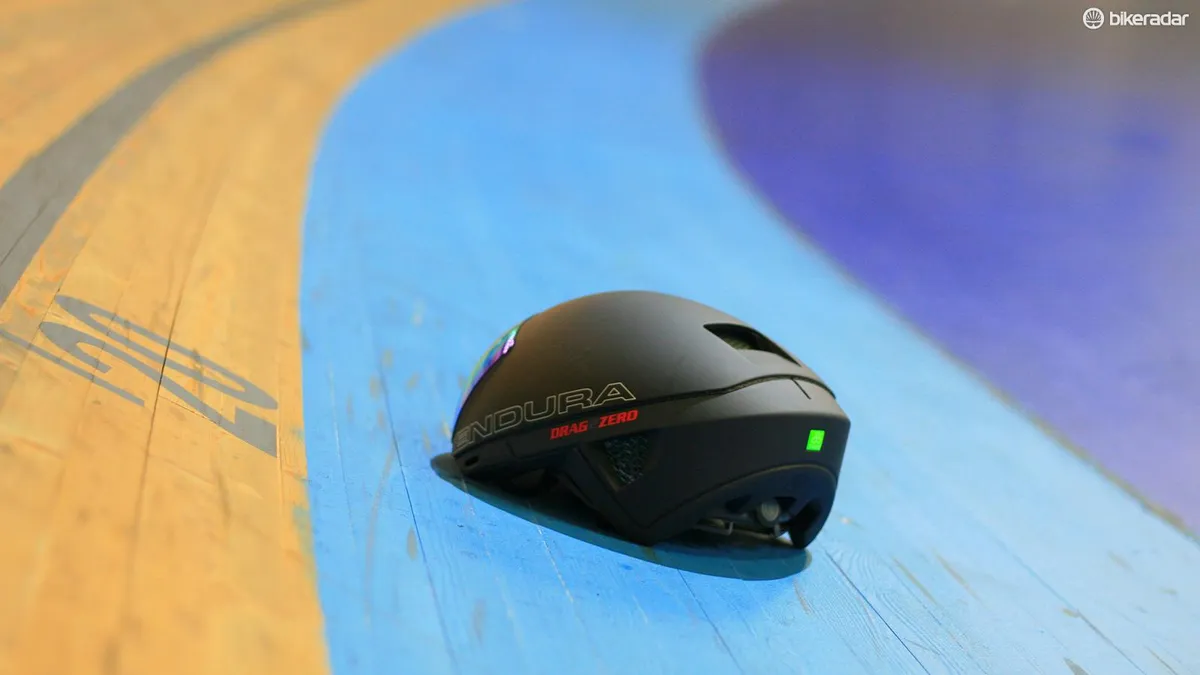In the race to be as fast as possible and save watts here and watts there, much time and effort has been spent micro-engineering the bicycle to the finest detail. But if Endura's aerodynamics specialist Simon Smart is to be believed, the development of aerodynamic clothing is lagging five years behind.
Perhaps, until now.
- How Endura applied their MTB philosophy to Grand Tour victories
- Specialized test aerodynamics of a beard
With the help of Smart, and the use of the Mclaren-AMG Petronas F1 Team’s wind tunnel, Endura is claiming that its latest range of Drag2Zero clothing is the fastest on the market.
Endura has released three new outfits: a skinsuit named the Encapsulator for TT riders and Grand Tour racers; a Road Suit for road racers and those looking for high-end performance on the road without the drawbacks of a full skinsuit; and a bibs and jersey set for those looking for a touch more flexibility.
There's also a new Drag2Zero Helmet, which comes with a click on/off aerodynamic fairing and a visor that's attached with magnets.
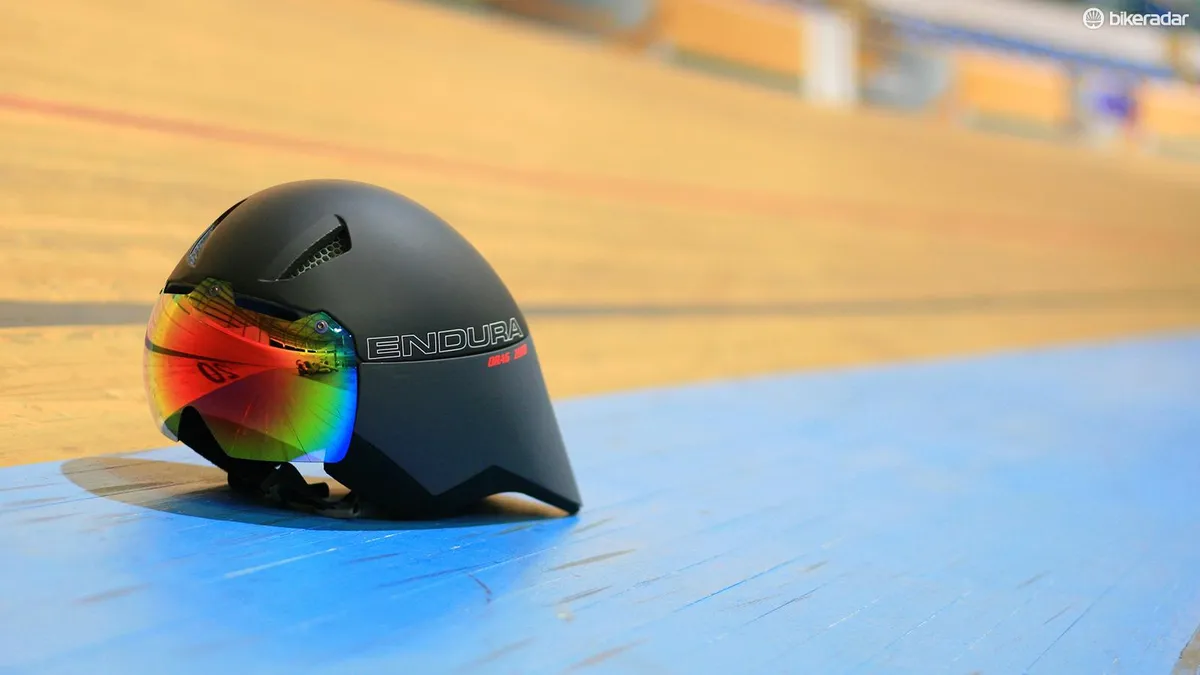
The development of the clothing not only benefited considerably by having Smart at the technical helm, but also input from pro road racer Alex Dowsett. Their partnership has developed over the years and includes the construction of the skinsuit that Dowsett wore in the 2014 Commonwealth Games — where he won the Time Trial by eight seconds, which is something Dowsett attributes to the garment.
As well as Dowsett attending testing sessions at the wind tunnel, the team also created a life-like mannequin of Dowsett so that Smart could maximise his testing time in the tunnel. To create the life-like mannequin, four million data points were collated from Dowsett's body so Endura could effectively test its suit on Dowsett without him actually being there.
In total, Endura says it tested over 80 different versions of the suits.
Chevrons and fancy patterns
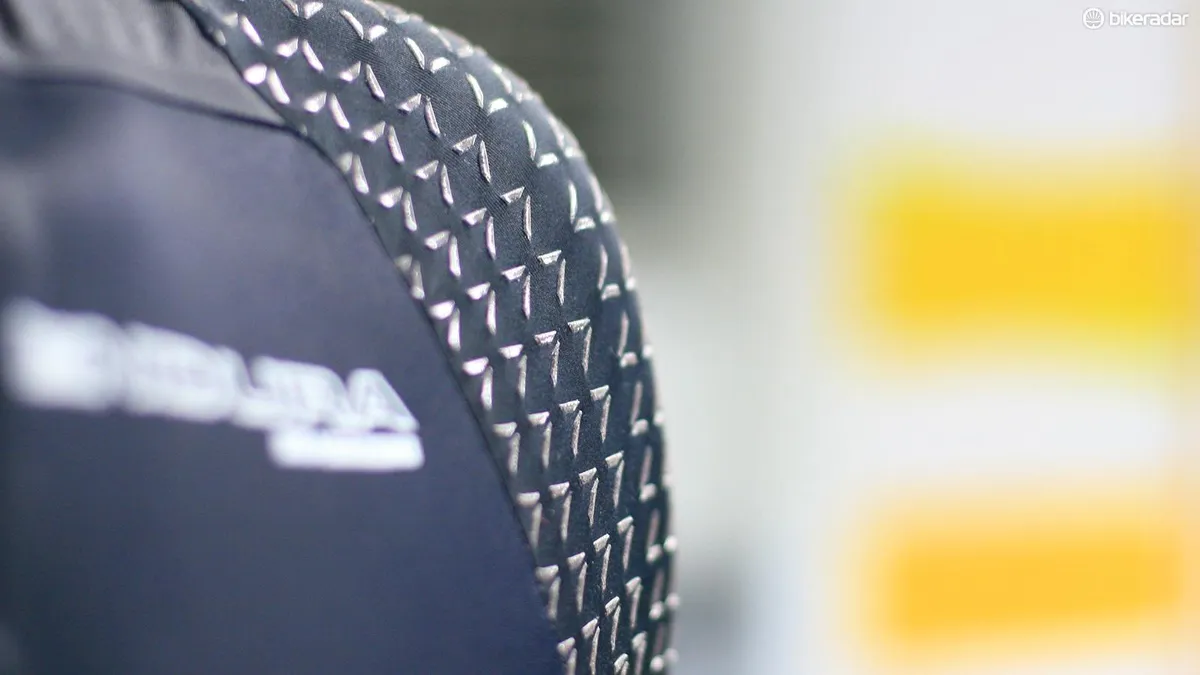
Smart has been involved in aerodynamics for a long time, having worked in both the cycling and Formula One industry, including stints with Red Bull — he’s a man who knows his stuff.
During Endura's launch presentation for the new outfits, Smart described how tubular forms, such as arms, leave a low-pressure void behind them when air flows past. The bigger the void, the more drag they create (the low-pressure zone is effectively pulling you backwards), so the ideal is to reduce this low-pressure void where possible.

This is generally done by disrupting the airflow around the tube, in order to direct the air flow back towards the back of the tube (or arm).
While a number of manufacturers have played with trips — small strips of raised material that lays across a smooth surface to introduce turbulence — to disrupt this airflow, Smart doesn’t think this works ideally on cyclists. This is because the trips likely work well at a given speed, but don’t work at a range of speeds – something cyclists cannot avoid. By manipulating the surface, you’re also able to ‘attach’ the air flow to the body for longer, apparently.
As such, he believes Endura has designed an airflow disruptor that works to reduce this low-pressure void at a wider range of speeds and in an effective manner.
This is Drag2Zero technology, called SST (Surface Silicon Topography).
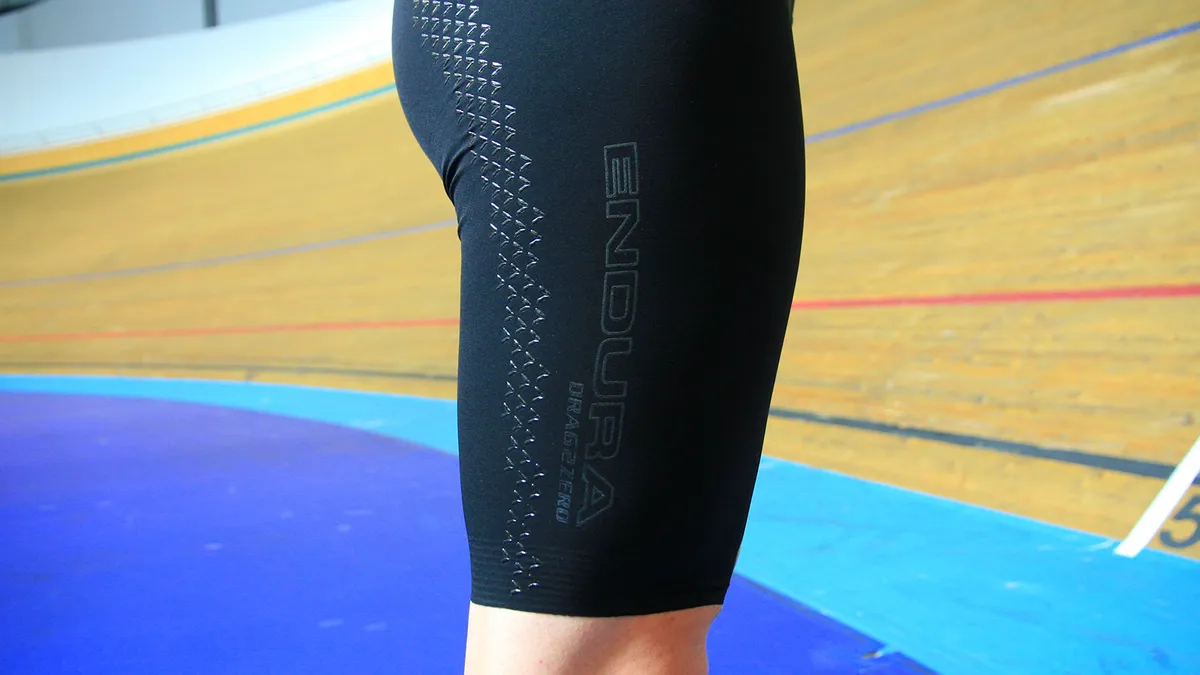
This takes the form of silicone chevrons that are effectively printed on to the material, though in some applications it’s replaced with a texture woven in to the material. These are located over and around the shoulder, down the sides, the upper arms and on the thighs of the clothing.
They’re not located on the helmet or the back of the suits however as there’s no void to fill here — the body acting rather like an aerofoil, claims Smart.
Most of the detailing on aerodynamics is concentrated on the upper body, which is generally relatively still while on the bike, so it's easy to model and locate airflow disrupting materials. There are some on the legs, but generally, as these move constantly, it’s harder to model the airflow and aerodynamic effects.
The clothing
The three sets of clothing have been designed to work best at different ranges of speed and to reflect the most likely use of the garment.
For example, the Encapsulator suit is designed to work best at 46 to 58kph, which is likely to fall in the range of time trialists and the pro peloton. Endura claims that at 46kph you’ll save 9.6W compared to its best competitor, and at 58kph it’ll save 1.4W.
The Road Suit is built for slightly slower speeds – 32 to 50 kmph — because it’s aimed at slightly more average road racers. This has the woven fabric around the shoulders and the silicone printing on the legs in slightly different areas to the Encapsulator.
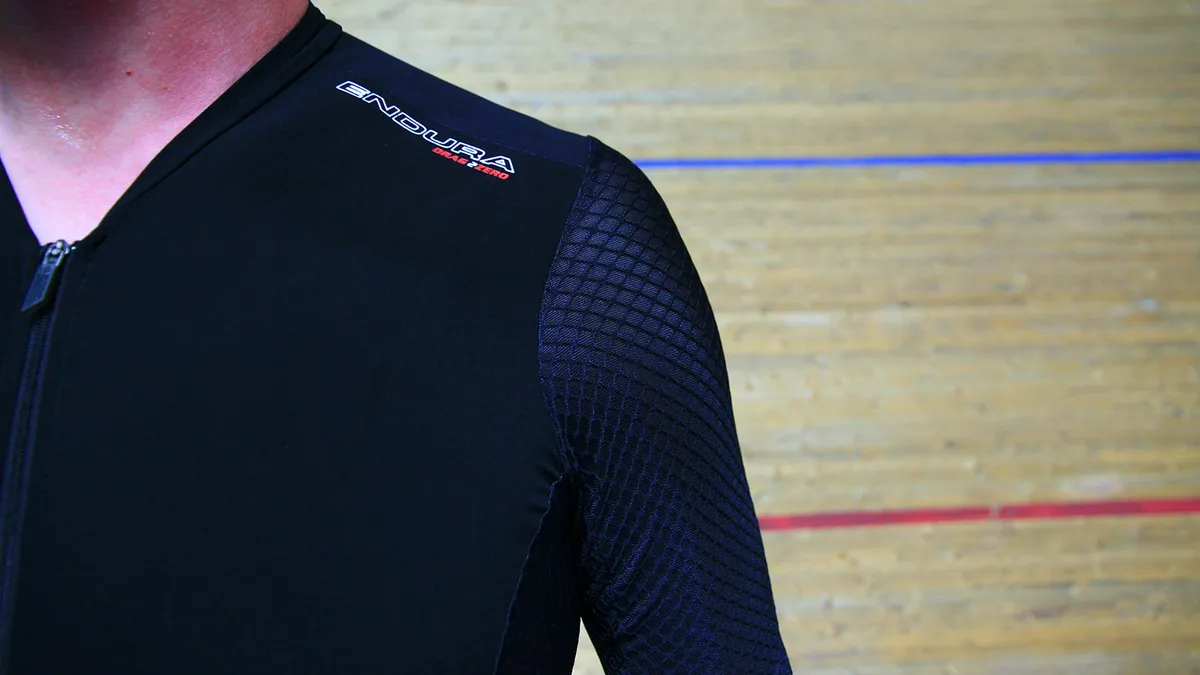
Endura claims that this will save you 1.7W over the best competitor at 32kph and 8.4W at 50kph (though in this case the best competitor is a different suit).
The separate bib and jersey is aimed not at recreational riders, as such, but those looking for flexibility and performance at a slightly lower price.
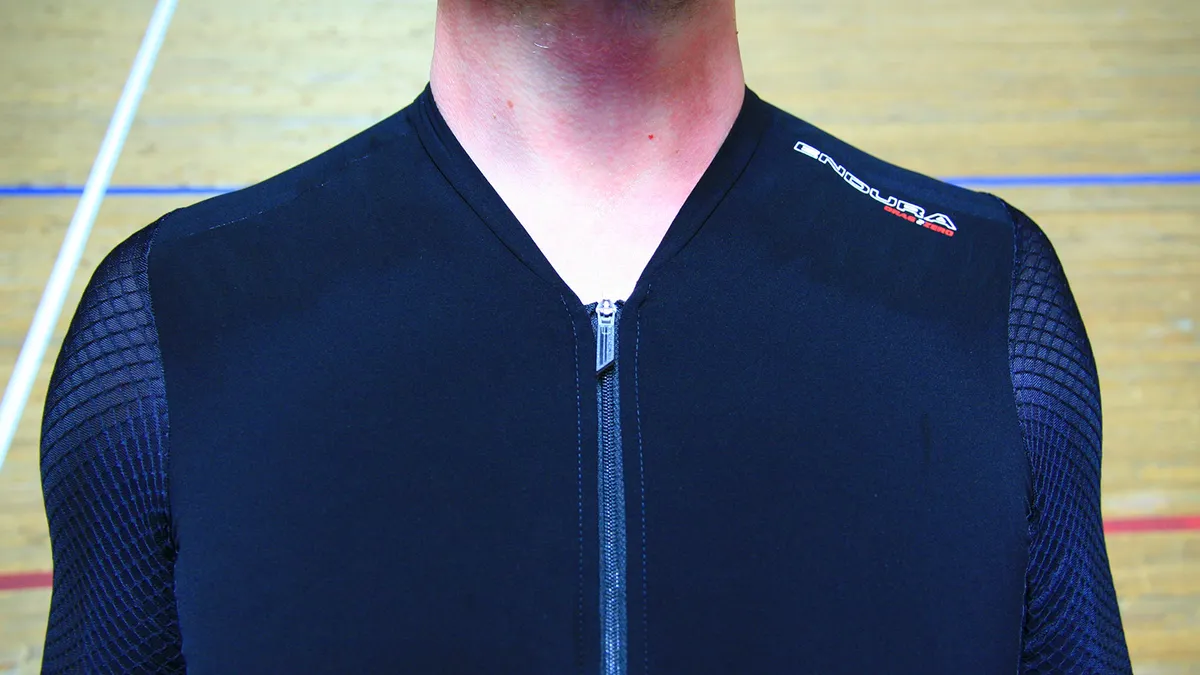
Saving watts
The effect of this work though is that Endura claims not only is the clothing the best performing on the market (and its marketing materials show tests it's completed with competitors), but that it’s also the cheapest way to save watts on the bike.
As wind resistance counts for up to around 90 percent of your total resistance, and the body roughly 70-–85 percent of that, if you can reduce the drag caused by your body you can drastically increase speed for a given effort.
With frames and wheels easily costing thousands, and given aero clothing costs a few hundred but has a greater overall effect, I agree that this is an area worth spending your cash on, especially if you are looking to get faster.
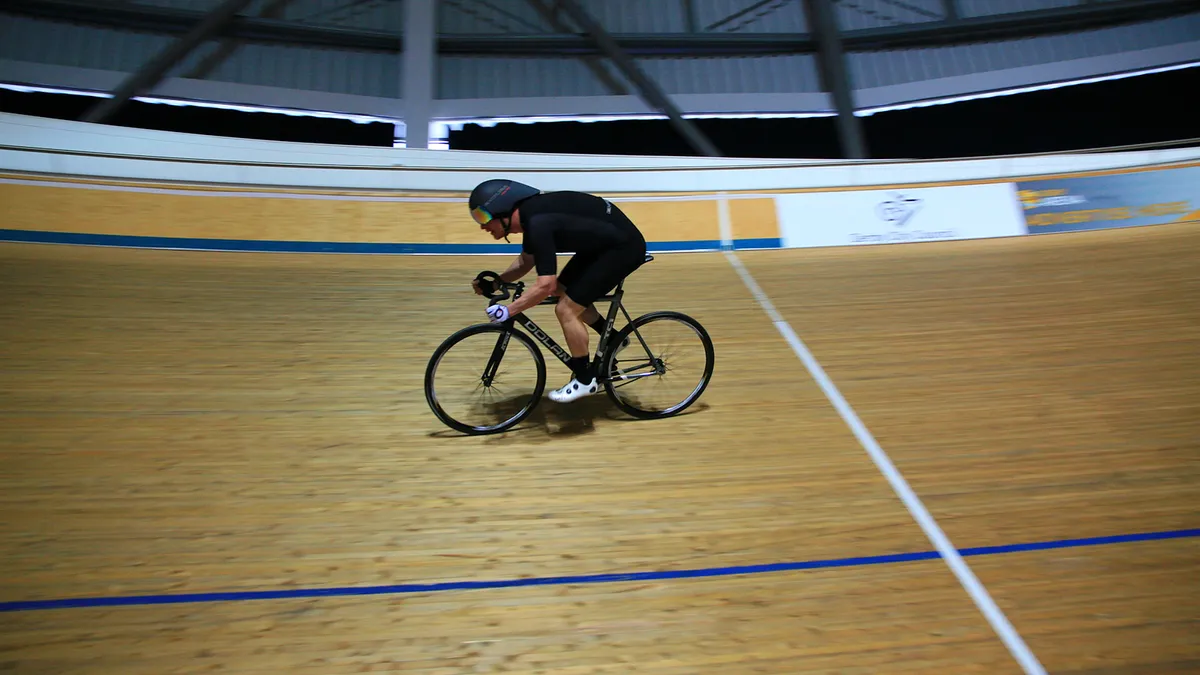
Endura’s figures suggest that in a ‘good’ TT position at 50kph clothing can save 37 watts and at an average cost of £370, this represents £10 per watt. A helmet can save around 10W, and at £350 this is £35 per watt
Compared to components and frames, this is significantly less. A wheelset might save 27W, but if you’re spending £2,000 on some fancy deep section carbon wheels that’s £74 per watt, and a £5,000 frame (expensive, but not beyond the realms of possibility) that saves 15W is £333 per watt.
Obviously, costs for wheels and frames, and the savings they provide vary massively, but it’s relatively easy to see why Endura believes that clothing is the best pound per watt saving.
Smart worked on the Giant Trinity aero bike — one of the first truly aero designed bikes back in the day — and he claims this was a bit of a step change in gaining speed on a bike. He believes that this technology is the next step change in decreasing drag.
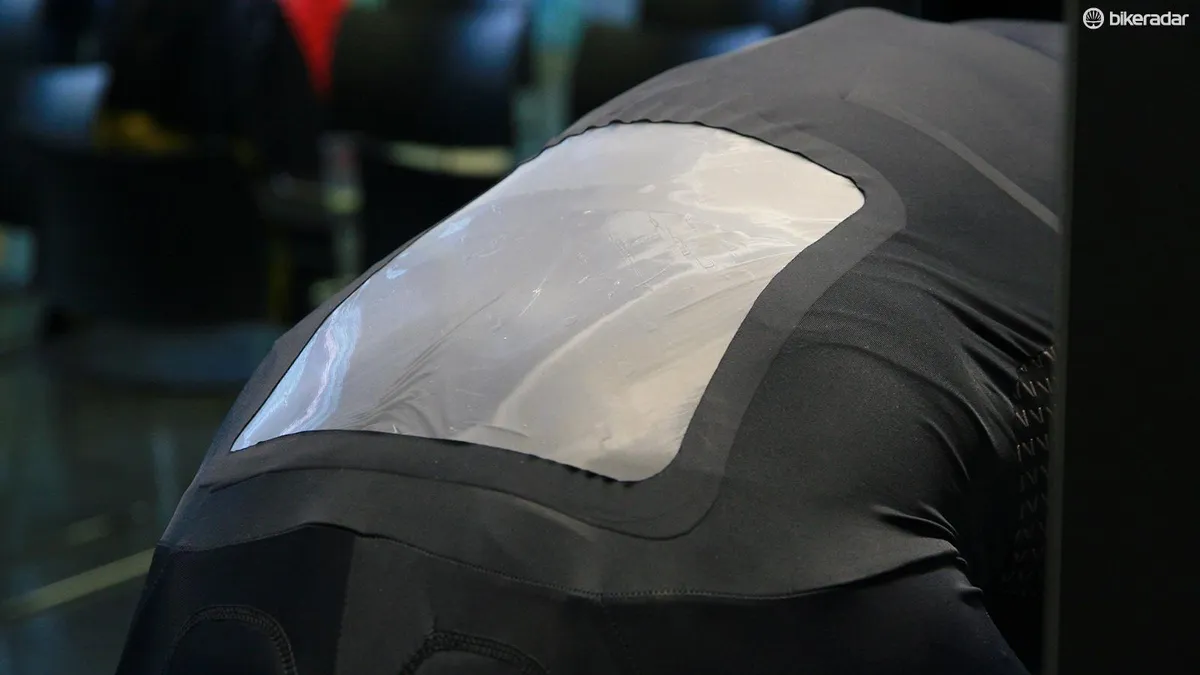
In the future, more customised clothing is the next soft/hardware option to get the absolute ideal fit for the rider, and how they ride.
However, there’s no getting away from the fact that it’s the shape of the body that creates the biggest impact of drag. Smart believes that, alongside clothing and bike, riders should really look at their positioning on the bike.
Getting a bike fit right is handy, but even looking at yourself in a mirror and shifting arms, shoulders, torso and head around until you ‘look’ more aero could be a really simple and cheap way of getting that little bit faster.
Riding the kit
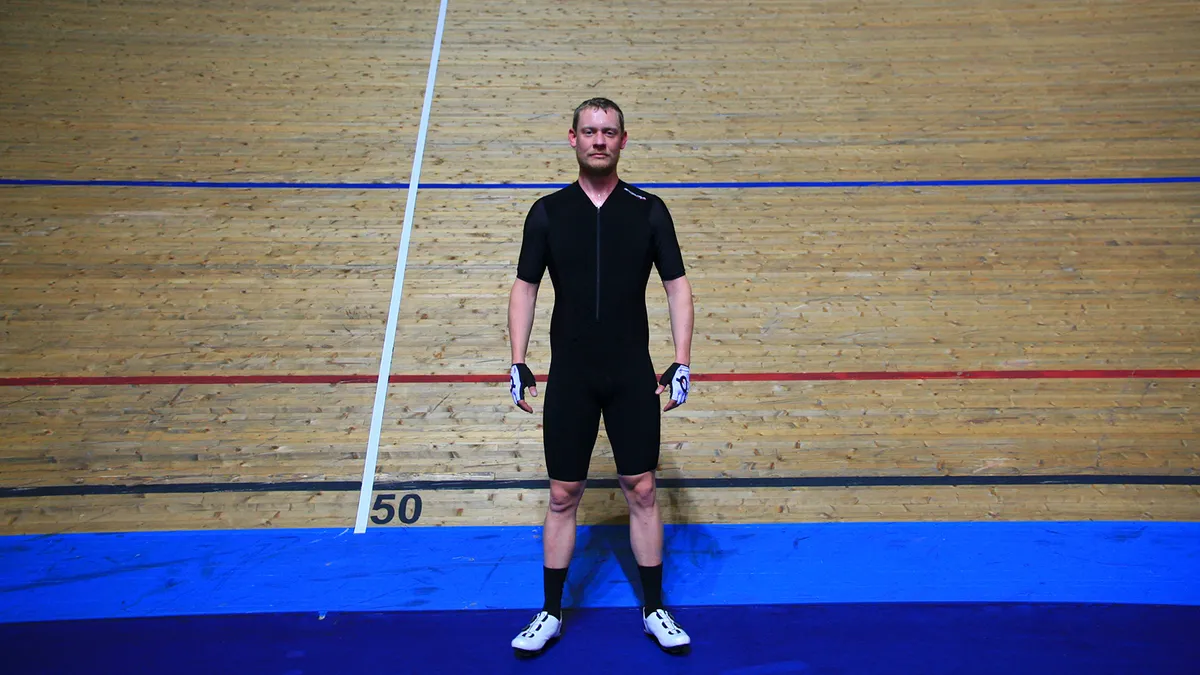
I spent a little time spinning around Derby Velodrome in the Road Suit and new helmet just to get a taste of what it was like. However, without our own BikeRadar wind tunnel I cannot confirm or deny the aerodynamic claims of Endura.
Despite this, I certainly didn’t come away disappointed with the cut or comfort of the suit. With the slight split at the front of the suit (for flexibility, and comfort breaks) it is relatively easy to put on, though with a tight fit over the thighs and arms it needs pulling in to place. If it were baggy though, there’d be an aerodynamic cost.
The chamois was, for me, a little tight when stood up, but bent over on the bike it caused no discomfort. Endura says it’s a super breathable one too, so hopefully shouldn’t get too sweaty.
The material felt light and breathable — I worked up a good sweat on the track — and it didn’t take long for the suit to dry once off the bike and it didn’t feel heavy or clammy.
The full-length zip stops pretty low below your neck, so doesn’t risk pinching your skin and it’s good to still see three pockets at the back. There’s a ‘Spoiler Cover’ covering their openings, to further aid aerodynamics, but it does, ever so slightly, hinder access — you win some, you lose some.
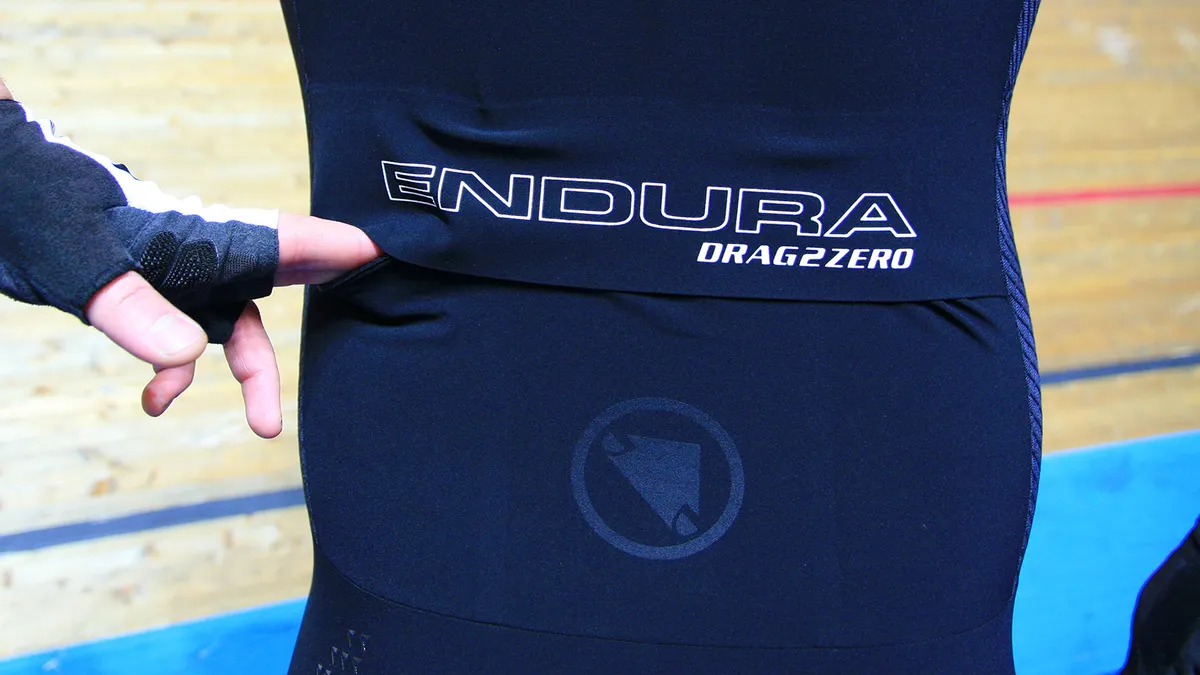
The helmet was also comfortable. While some fairings can catch your ears, the slightly flexible material caused no discomfort. It clips off easily enough too, which is handy if you’re going out on a road ride and don’t want the full faring.
With the faring attached, it was pretty loud inside, but this is a worthwhile cost if it helps you maintain speed.
While I’ve been critical of the Koroyd straw-like construction in the past replacing the traditional EPS foam, Endura says that it uses a wider straw and angles the straws better to increase internal air flow.
Round the track the helmet didn’t feel too hot, but a ‘regular’ vented helmet would have been cooler. It certainly wasn’t as bad as some Koroyd lids I’ve tried in the past.
Worth its weight?
There will be many who will baulk at the price of the outfits, which is expected to be around £350 for the skinsuit, but there are also many out there who will spend thousands on fancy wheels to theoretically save fewer watts, according to Endura.
The clothing is comfortable and potentially very effective, and there’s certainly some pedigree with the development including time with the Movistar team and Alex Dowsett — earlier versions of the clothing were worn in his successful hour record.
While I won’t put my neck on the line and confirm that Endura’s kit is the fastest, I do subscribe to the theory that clothing is the cheapest way to go faster, just as long as you’ve got your body position right.
